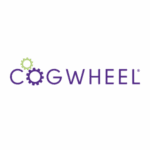 Unsure what is eLearning or micro-learning? If you’re new to the inspired eLearning world, we’ve put this guide together to help you understand everything about electronic learning and some of the jargon used in the online learning world, such as LMS, authoring tools, and SCORN.
Unsure what is eLearning or micro-learning? If you’re new to the inspired eLearning world, we’ve put this guide together to help you understand everything about electronic learning and some of the jargon used in the online learning world, such as LMS, authoring tools, and SCORN.
We know you’re probably running at a hundred miles per hour right now, and eLearning might not be at the top of your list. Still, we can guarantee that anyone who uses online learning for their business will tell you how beneficial and impactful it truly is.
What is eLearning?
Understanding what eLearning is, is a scenario whereby instead of students learning from a teacher in person, they learn via a Learning Management System, also known as an LMS on the internet.
A fantastic definition of online learning comes from the Association for Talent Development.
“eLearning is a structured course or learning experience delivered electronically; it can also include performance support content. Many different elements can make up a learning program, such as live or pre-recorded lecture content, video, quizzes, simulations, games, activities, and other interactive elements.” — ATD
Online training is knowledge delivered online, a mix of accessible media and administered content (training provided in real-time). A great example of this is when the learner would take an online course via Zoom call and send a quiz based on the course afterward as a follow-up. There’s always a “learner” receiving the training and a “trainer” or “admin” that’s delivering and reviewing it.
Unsure what SCORM definition is? The SCORM authoring tool (Shareable content object reference model) standard was the first specification for eLearning authoring tools. Though it wasn’t until 2004 that the standard was globally accepted, a SCORM based authoring tool is still used as the basis for eLearning platform content creation.
What are the advantages of e-learning?
While the demand for e-learning is growing exponentially – especially with more people working from home – it’s an affordable and effective way to train employees to enhance their skills and knowledge within the company. It’s used to train employees and used to train customers and clients to help grow the business.
If you’re wondering, what is the purpose of eLearning? It won’t only enhance the quality of learning and teaching; it’s completely changed how and when people learn. Learners can now have the flexibility to learn as and when convenient for them, which will help them digest the information quickly.
Here are some of the reasons you might like to invest in e-learning training online courses:
- It lowers training costs.
- Allows you to train hundreds of employees anywhere in the world.
- Say goodbye to PDFs, Word Docs, PowerPoints, and any other training floating around on your desktop and combine it all into one LMS.
- Train employees, customers, or students faster.
- Track how they are engaging in the course with exceptional analytics.
What is the difference between e-learning and online learning?
Unsure what is the difference between e-learning and online learning? We’ve got your back! E-Learning means that the learner and teacher will interact only through the internet, while online learning is about using virtual software conferencing software such as Zoom for example, to interact face to face.
With this in mind, e-Learning opens up a world of possibilities once you choose the proper authoring tools and Learning Management System. The learner will get the most out of the training without being there for it physically.
What is the opposite of e-Learning?
Now you’ve got an idea about what is e-Learning, you might be wondering, what is the opposite of e-Learning? You may have heard the term called blended learning. If you haven’t, don’t worry! Blended learning is a combination of learning at a traditional distance learning in person.
Blended learning is a hybrid of in-person learning bolstered with online content to enhance the experience.
The Online Learning Consortium conducted a study with Babson Research Group to define blended learning as “instruction that contains an average of 30 percent to 79 percent online content.”
Blended learning is most effective when some knowledge can be shared online but some parts still require in-person learning.
What is eLearning used for today?
eLearning has two particular use cases. The first is academic eLearning such as k-12 learning programs and universities that offering online courses.
The second is corporate eLearning, which has been the main driver of growth in recent years. While many companies are still opting for online training platforms, corporate eLearning still has some uses.
Lastly, we have blended learning, a mix of formal in-person learning and eLearning delivered before and after to increase knowledge retention, which we talked about above.
Academic eLearning
Academic e-learning is one of the more common uses when people think of eLearning. Platforms like Canvas and Blackboard were built to create academic content and create a space for learners to access it.
It’s a very 1-dimensional form of eLearning with some interaction on the teacher-side for grading and responses to discussion boards. The content is typically text, image, or video media that the learner consumes and then responds to for evaluation.
Corporate eLearning
Corporate eLearning is sometimes confused with online training. The best difference and example we can give is companies like IBM or HubSpot that offer eLearning courses on their products. Another great example is corporate team leaders providing eLearning content to new hires on communication policies.
Corporate eLearning has many of the same practices as academic, but with more business-oriented purposes. Online training is more interactive from the trainer’s side and creates a more effective approach for businesses wanting to share knowledge at scale.
Some of the reasons to use e-learning would work for the following:
- Employee training
- Compliance training
- Onboarding training
- Product training
Proven E-Learning Benefits From Our Customers
As an LMS software company, we have seen plenty of customers reach new potential goals since implementing e-learning into their training programs. We thought it was only fair to share some of the proven benefits for learning training programs.
E-Learning benefits for businesses
Companies like Apple and Amazon paved the way for eLearning technologies’ growth.
Apple’s App Store enabled eLearning developers like Jude to create rich and engaging content that could be used to build:
- Online quizzes and exams that could be created and delivered in-app
- Interactive content that was fast and easy to make
- Mobile-friendly content that was touch-responsive
These all made eLearning more accessible, engaging, and ultimately more efficient to create. The App Store made a significant impact on how web developers would design for small screens and eventually mobile-responsive web pages.
Need proof on how e-Learning has taken a global company to the next level? This article on TechJury found that:
- IBM saved approximately $200 million after switching to e-learning as their primary form of employee training.
- A survey of 2,500 companies has 218% higher revenue per employee and 24% higher profit margins due to transitioning to online training courses.
- E-learning increases employee retention rates by 25% to 60%.
- Corporate e-learning takes 40% to 60% less time to complete when compared to traditional learning.
E-Learning can be implemented in nearly any use case! This is because the content is so much more fluid than rigid traditional learning methods.
Making online learning accessible anytime
eLearning content can make sharing knowledge resources easier and increase accessibility. This means rather than directly sending learning to someone; you can share access to a knowledge resource space. That way, when the knowledge is needed, it can be pulled up in a moment, making learning content more effective and engaging.
Learning content that’s accessible has been proven to increase knowledge retention. This is because contextually relevant eLearning that’s easy to find when needed bridges knowledge gaps for learners.
Most eLearning programs are implemented because of the attractive reduction in cost to teach employees valuable skills. By calculating your eLearning ROI, you can understand the savings eLearning will create for your business.
Want to take a look at our learning solutions?
Contact our team to discuss how we could help with learning in your organization.


















